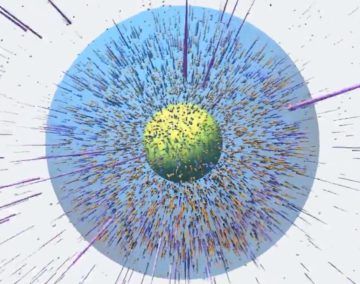Thomas Lewton in Wired:
 In 1987, A giant star exploded right next to our own Milky Way galaxy. It was the brightest and closest supernova since the invention of the telescope some four centuries earlier, and just about every observatory turned to take a look. Perhaps most excitingly, specialized observatories buried deep underground captured shy subatomic particles called neutrinos streaming out of the blast.
In 1987, A giant star exploded right next to our own Milky Way galaxy. It was the brightest and closest supernova since the invention of the telescope some four centuries earlier, and just about every observatory turned to take a look. Perhaps most excitingly, specialized observatories buried deep underground captured shy subatomic particles called neutrinos streaming out of the blast.
These particles were first proposed as the driving force behind supernovas in 1966, which made their detection a source of comfort to theorists who had been trying to understand the inner workings of the explosions. Yet over the decades, astrophysicists had constantly bumped into what appeared to be a fatal flaw in their neutrino-powered models.
Neutrinos are famously aloof particles, and questions remained over exactly how neutrinos transfer their energy to the star’s ordinary matter under the extreme conditions of a collapsing star. Whenever theorists tried to model these intricate particle motions and interactions in computer simulations, the supernova’s shock wave would stall and fall back on itself. The failures “entrenched the idea that our leading theory for how supernovas explode maybe doesn’t work,” said Sean Couch, a computational astrophysicist at Michigan State University.
More here.
